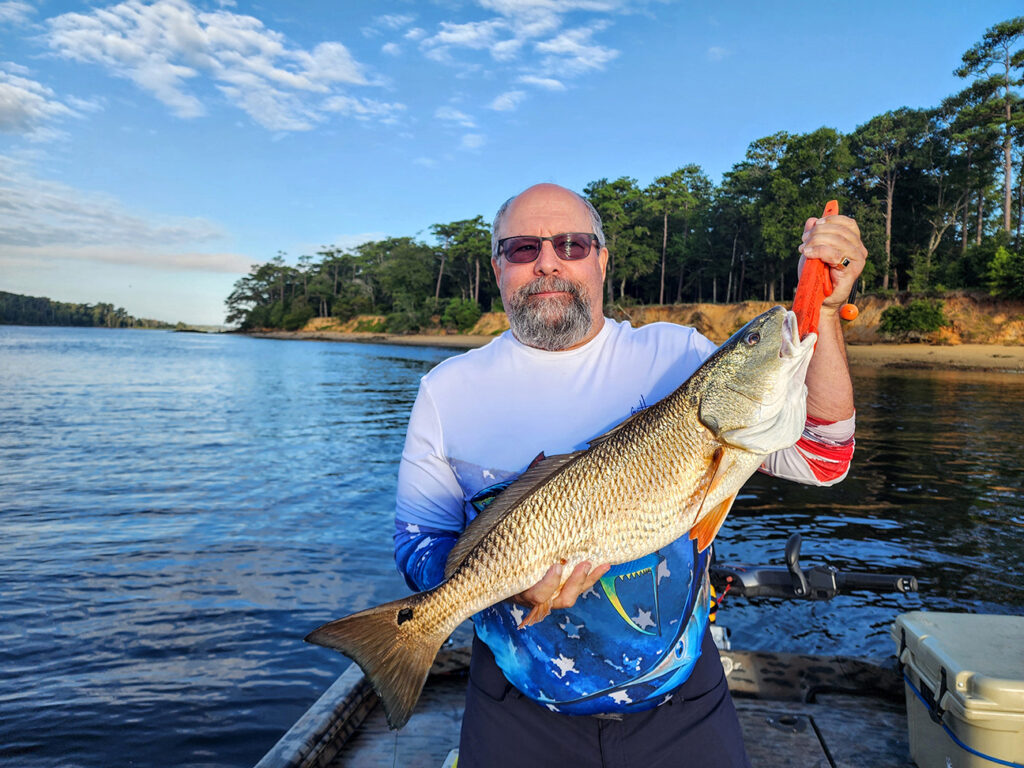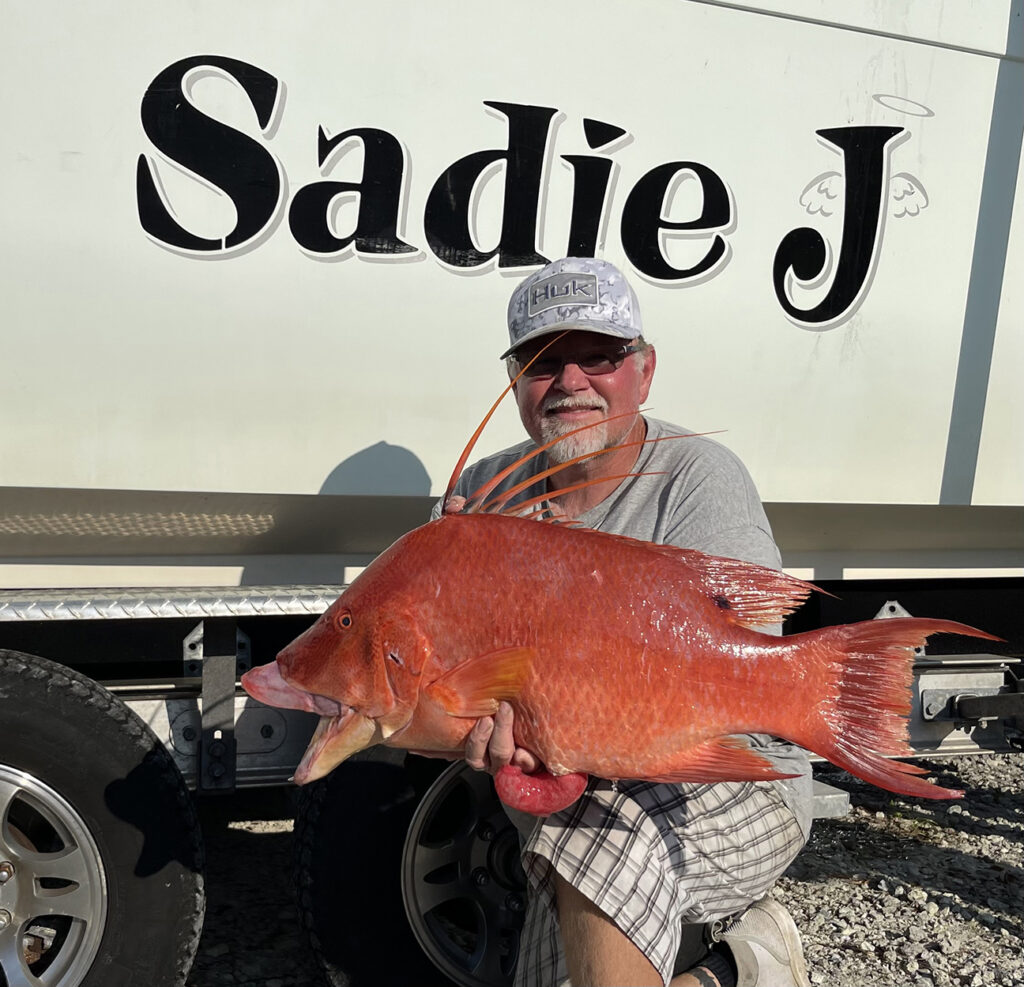Carolina Beach – September 2024
Lewis, of Island Tackle and Hardware, reports that water conditions in the Cape Fear River continue to be dirty, so anglers have moved into the waterway around Carolina Beach and are finding a bunch of success. A lot of puppy drum are being caught, including quite a few slot-size fish.
Also staged in these same areas are plenty of flounder, and the flounder are hitting the same live bait offerings.
Targeting docks and other hard structures in the ICW is producing sheepshead and black drum.
Bottom fishing from the surf is generating a mixed bag of pinfish, croaker, whiting, and spot. A pompano or two may also be caught.
Nearshore anglers have been finding that the spanish mackerel fishing has been tough this summer, but anglers hope to see the action pick up dramatically as the water temperatures start to come down.
King mackerel are just starting to show up a little better. For now, though, the king bite has been quiet overall.
Bottom fishing with live bait at the nearshore wrecks has been producing flounder and red drum.
Deeper structures are holding amberjacks and tons of barracuda, and anglers heading offshore are targeting wahoo and blackfin tuna.

Vic Fortin, of New Bern, caught this red drum in Snows Cut using a live mullet. He was fishing with Capt. Andrew DiMauro of Reelgood Fishing NC.
Christian, of Seahawk Inshore Fishing Charters, reports that decent numbers of red drum are in the Cape Fear River and the creeks off the river. Most fish are in the 19-22” range, with some bigger fish (to 30”) mixed in. Live finger mullet on a Carolina rig or fished under a float have been the trick (and the mullet have been super easy to find). The red drum bite has been good on all tides.
Anglers are catching flounder when targeting the redfish. Most of the flatfish are coming from live finger mullet fished on the bottom. For the most part, this is a class of 17-21” fish, with bigger ones in the mix.
Speckled trout are scattered in the area and are being picked up while using the same tactics for redfish and flounder. Most of the trout are smaller, with just the occasional better one (to 22”). The trout seem to be hanging tight to current seams and around grass or oyster points.
In September, expect a few big reds to show up along the nearshore reefs and wrecks.
Mason, of Grand Slam Fishing Charters, reports that despite all the freshwater in the Cape Fear River, the red drum bite wasn’t super affected. The action has been better in the lower part of the river, more likely due to water clarity versus salinity.
For the most part, anglers are having success targeting shallow coves and points back in the marshes with live bait during the higher tides. Fishing areas with a little current and some oyster structure is also key. When the tides drop out, start looking for fish in the deeper channels. Despite the cooler weather, this is still summer fishing, so be prepared to move around a lot. Don’t stay in one spot longer than 15-20 minutes.
Black drum will be mixed in all these same areas, and using live shrimp is key to getting in on the bite.
Some speckled trout are mixed in the inshore action, especially with cooler morning temperatures. Fishing live bait under slip corks about 1.5’ off the bottom has been the top setup. For the most part, the best bet has been targeting 6-8’ depths in areas near structure.
Tony, of Reel Teal Charters, reports that fishing the ICW is producing a lot of red drum. Targeting docks with Carolina-rigged live mullet has been the ticket. The class of fish is strong, with most of the red drum falling within the slot (18-27”). The numbers of fish have also been good, as finding docks where you can pull 8-10 fish off before having to move on hasn’t been uncommon.
Some speckled trout are being caught around schools of bait closer to the inlet. Slip corks fished with live mud minnows have been best. The two hours on both sides of low tide have produced the most bites.

Larry Rowland, of Carolina Beach, caught this hogfish bottom dropping offshore of Carolina Beach using cut bait.
Rod, of OnMyWay Fishing Charters, reports that spanish mackerel are just starting to show back up, but for now, this action is marginal at best.
Anglers can find some king mackerel in the 10-15 mile range, though the bite overall still isn’t very good due to water clarity. Anglers have needed to push out to 20+ miles before finding the more consistent action.
A lot of amberjacks and barracuda are staged over reefs and ledges in the 15-30 mile range.
Bottom fishing remains strong starting at 20-25 miles. Grouper, American red snapper, porgies, big grunts, and some better-looking black sea bass are all part of recent catches, and September is when the sea bass fishing picks up even more.
Starting at 30+ miles, big vermilion snapper and triggerfish are also mixed in the action.
Runs out to the break are producing blackfin tuna and wahoo, but there still hasn’t been many mahi round. Overall, this has just been a slow year for mahi.
Jeremiah, of Kure Beach Pier, reports that a couple king mackerel (to 25 lbs.) have been caught. Moving into September, the pier is hoping to see the king action pick up as these fish move back closer to shore.
Casting efforts are hooking bluefish and some spanish mackerel.
Bottom fishing is producing a few sea mullet and red drum. For both species, the better action has come in the evenings.





